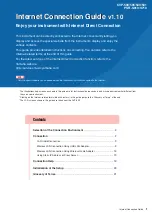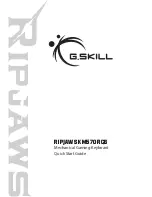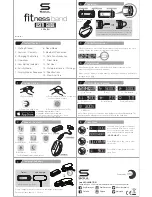
®ÂØÒňÎ
XP-50 Supplemental Notes
©1997 Roland Corporation U.S.
Creating RPS Sequences from Standard MIDI Files
Page 2 of 2
Assigning Patterns to Keys
Now that we have created Patterns that contain different sections of the song, we will assign those Patterns to be triggered
y keys on the keyboard.
b
1) Press the RPS (6/14) button.
2) Use the ALPHA DIAL to set the Trigger Quantize to “MEASURE.”
3) Press the CURSOR DOWN (
u
)
button.
4) Press the key on the keyboard from which you want to trigger this Pattern.
5) Use the ALPHA DIAL to select the desired Pattern.
6) CURSOR to “Playback Mode” and use the ALPHA DIAL to select “LOOP 1.” This specifies that the Pattern will play
only when the key is held down.
7) Press the RPS button (under SYSTEM) so it is lit.
8) Press the key to which you have assigned a Pattern. It will play as long as you hold it.
9
) Repeat steps 4-5 to assign other Patterns to keys on the keyboard.
Synchronizing RPS Patterns to the Song
To synchronize RPS Patterns, you will need to play the XP-50’s internal sequencer so that all Patterns will play at the tempo
designated by the sequencer. This is also necessary to ensure that the Trigger Quantize function that we set to “Measure”
(in the previous section) will function properly. With Trigger Quantize set to “Measure,” each Pattern you trigger will begin on
he first beat of the next measure. This will help prevent timing glitches if you happen to trigger a Pattern too early or late.
t
It is a good idea to erase any existing song data from the XP-50’s internal sequencer. This will allow us to play the
sequencer for tempo purposes while preventing any unwanted song data from playing back with the RPS Patterns. Use
he following procedure to erase the song data:
t
1) Press the SEQUENCER and EDIT buttons so they are lit.
2) Press the TRK EDIT (1/9) button (to the right of EDIT).
3) Use the ALPHA DIAL to select “01:ERASE.”
4) CURSOR to “Target” and use the ALPHA DIAL to select “TRK ALL.”
5) CURSOR to “Status” and use the ALPHA DIAL to select “ALL.”
6) CURSOR to “Measure” and use the ALPHA DIAL to select “1 for ALL.”
7) CURSOR to “Channel” and use the ALPHA DIAL to select “ALL.”
8
) Press ENTER. “Executing” will be displayed.
We can use the XP-50’s Loop Playback mode to ensure that tempo information will be generated continually. Use the
following procedure to enable Loop Playback:
1) Press LOOP so it is lit.
2) Press PLAY.
3) Press any of the RPS keys you assigned earlier and notice how you can trigger another RPS key without it actually
starting until the next measure.
Saving your RPS Sequence
Now that we have created several RPS Patterns, it is a good idea to save this information to disk. Don’t worry, this won’t
rase or replace the original MIDI file we started with.
e
1) Press DISK/UTILITY.
2) Press “3” on the keypad to select “SAVE.”
3) Press “1” to select “SONG.”
4) To name the song use the LEFT and RIGHT CURSOR (
34
) buttons to move between the characters and the ALPHA
DIAL or keypad to select the desired character.
5
) Press ENTER to save the song. The song will be saved as an XP-50 (.SVQ) file.
Playing your RPS Sequence
The XP-50 has the ability to playback files without loading them into memory. Use the following procedure to playback your
PS sequence directly from the disk:
R
1) Press SEQUENCER so it is lit and CURSOR to the song number (i.e. “00: Internal Song”).
2) Use the ALPHA DIAL to select the .SVQ file you just created.
3) Press ENTER followed by PLAY. Your RPS Patterns can now be triggered by playing the appropriate keys.
In addition to making Standard MIDI Files (or XP-50 files) interactive, RPS Patterns are useful in other ways such as
trying different arrangements or rehearsing specific sections of your songs. We hope this document gives you a better
understanding of how RPS sequences are created on the XP-50.




















